Imagine walking into your home, and everything is brand new.
Shiny appliances, pristine floors, and it has that new house smell.
You picked the floor plan. You chose the finishes.
It’s yours from day one.
That’s why more buyers are skipping bidding wars and buying new construction homes this year.
But here’s the catch: Building a home? Totally different ballgame.
More decisions. More surprises. Extra costs. And a learning curve that catches a lot of people off guard.
This guide walks you through everything you need to know so you can build smart, avoid costly mistakes, and move into your new home with zero regrets.
Let’s dive in.
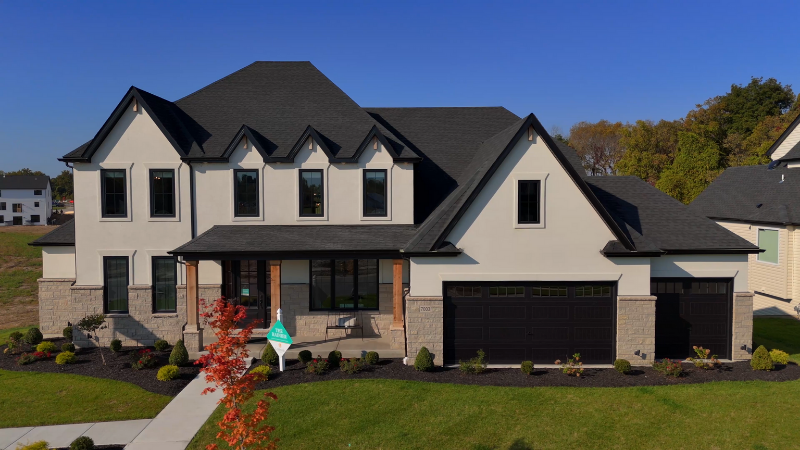
Whether you’re a first-time homebuyer, looking to upgrade, or you just can’t find what you’re looking for in the current real estate market, building a new construction home may be the perfect option for you.
Building vs. Buying: Differences to Consider
There are some key differences between buying an existing house and building a new house.
Here are some things to consider:
| Feature | Building | Buying |
| Timeline | 6–12 months or more | Often 30–60 days |
| Customization | High – choose layout, finishes, upgrades | Low – limited to renovations after purchase |
| Energy Efficiency | High – built to current codes with modern systems | Varies – may need upgrades |
| Maintenance Costs | Lower – everything is brand new | Varies – systems may need repairs in an older home |
| Price Per Square Foot | Typically higher | Typically lower |
| Negotiation Flexibility | Limited – builders stick to base pricing | More room to negotiate price and repairs |
| Warranties | Yes – builder warranties included | Possibly – depends on age of home and negotiated terms |
| Move-In Timeline | Delayed – must wait for construction | Immediate or quick closing |
| Stress & Complexity | More steps – can be overwhelming for first-timers | Simpler home buying process |
| Location Choices | Newer developments or open land | Established neighborhoods with mature landscaping |
Not sure if building or buying is right for you?
Let’s talk through your options. Our team helps buyers all over St. Louis and St. Charles County figure out which path makes the most sense.
Types of New Construction Home Builders
One of the first choices you’ll make is whether to build with a production builder or a custom builder.
- Production Builders: They build homes that are typically more affordable. They build way more homes and offer set floor plans.
- Custom Builders: They offer full design freedom, build fewer homes per year, and sometimes come with a higher price tag. There are way more decisions for you to make as the buyer, since you usually design the home from scratch.
The new construction home-buying process is very different between production and custom builders.
Depending on your budget, needs, and experience with home design, one option will likely suit you better.
Production Builders
Production builders build tract homes and spec homes.
Both are brand new, but there’s a key difference: tract homes haven’t been built yet.
You have more say in the design process, like selecting finishes or upgrades.
The trade-off? You’ll need to wait for construction to be completed.
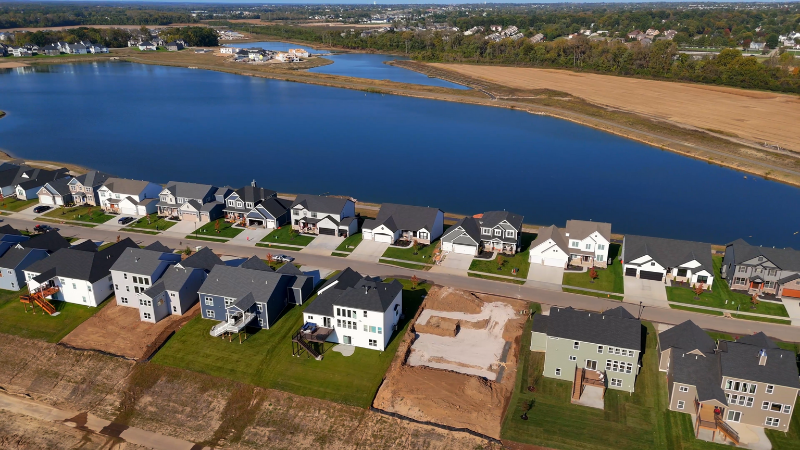
If you’re less concerned with customization and more focused on moving in quickly, a spec home might be the way to go.
Spec homes are also called “inventory homes,” “move-in ready homes,” and “market homes.”
These homes are built to be listed for sale.
These are already built, so you know exactly what you’re getting. No surprises and no wait.
But this also means no customization.
Some more info on production builders:
- Production home builders typically purchase large tracts of land and build a set number of homes using a library (sometimes called “series”) of pre-designed floor plans.
- Production builders deal in high volume and can build dozens to hundreds of new homes a year.
- They can also take advantage of bulk discounts on materials, which helps keep costs down.
- You build on their land. Just know that sometimes the lot is priced separately, and other times it’s included in the home’s total purchase price.
Custom Builders
Custom builders design homes entirely from scratch, usually on land you already own or plan to purchase.
Everything is fully personalized to your vision.
Want a coffee bar off the primary suite? A hidden bookshelf door? A four-car garage? This is where those Pinterest boards come to life.
The layout, exterior design, materials, special features, and finishes.
This route gives you more control but requires more involvement at every step. It is usually much pricier than going with a production builder.
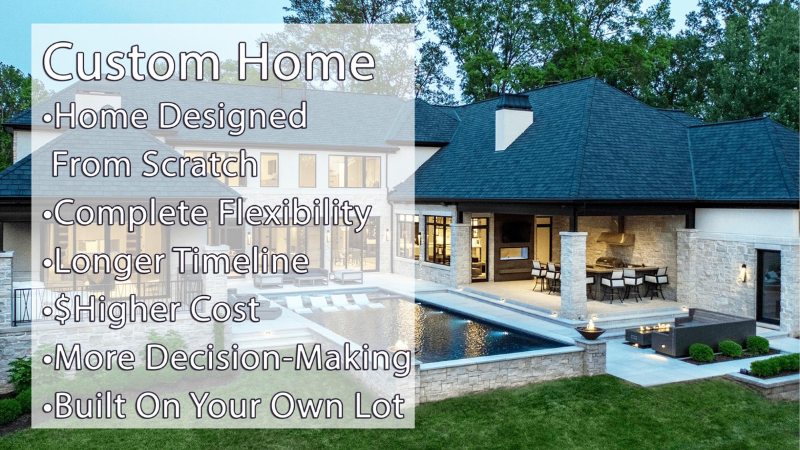
This can be a great option if you have a specific vision, unique needs, or are planning to build a larger, high-end home with custom touches throughout.
Do You Need a Realtor for New Construction?
For many first-time buyers, it doesn’t even cross their minds to use a realtor when working with a production builder.
After all, there’s an on-site agent at the model home ready to guide you through the process.
Why bring in anyone else?
Here’s the thing: that agent works for the builder, not you.
Their job is to represent the builder’s best interests.
While they want you to have a good experience building your home, the on-site agent works for the builder, not you.
You want someone in your corner.
It’s smart to have an agent representing just you, especially if this is your first time buying new construction.
A good buyer’s agent can help you ask the right questions, review contracts, and advocate for your needs every step of the way.
Related: Questions to Ask When Buying New Construction
We work with buyers in new construction every week.
From contract reviews to upgrade strategy to final walkthroughs. We’re in your corner, so nothing gets missed.
Who Should Use a Realtor When Buying New Construction?
- First-time homebuyers – You’ll benefit from expert guidance through a complex process.
- Buyers building semi-custom or tract homes – A realtor can help you compare options and make smart upgrade choices.
- Anyone comparing builders or new home communities – They’ll help you evaluate quality, reputation, and resale value.
- Buyers who also need to sell a home – A realtor can coordinate both transactions smoothly.
- People who want peace of mind – Having someone in your corner ensures you’re not missing important details.
Who Might Be Fine Without a Realtor?
- Experienced real estate investors – If you’ve done this many times before, you may already know the ropes of the building process.
- Buyers building fully custom homes – You’re already working closely with your builder and architect.
- Buyers with construction or real estate experience – If you understand contracts, timelines, and materials, you may not need extra help.
Related: Do You Really Need an Agent for New Construction?
Building Your New Home: Step-By-Step
There are a lot more steps involved in building a new home compared to buying an existing one.
Here is a high-level overview to break down the building process:
Step 1: Choose a Community and a Good Builder
One of the first things you want to figure out is what type of home you want:
- Single family
- Townhouse
- Condo
- Villa
Decide which type of new construction home you want, then find the builders in the area that build what you’re looking for.
It’s a good idea to list builders in the area you’re shopping in.
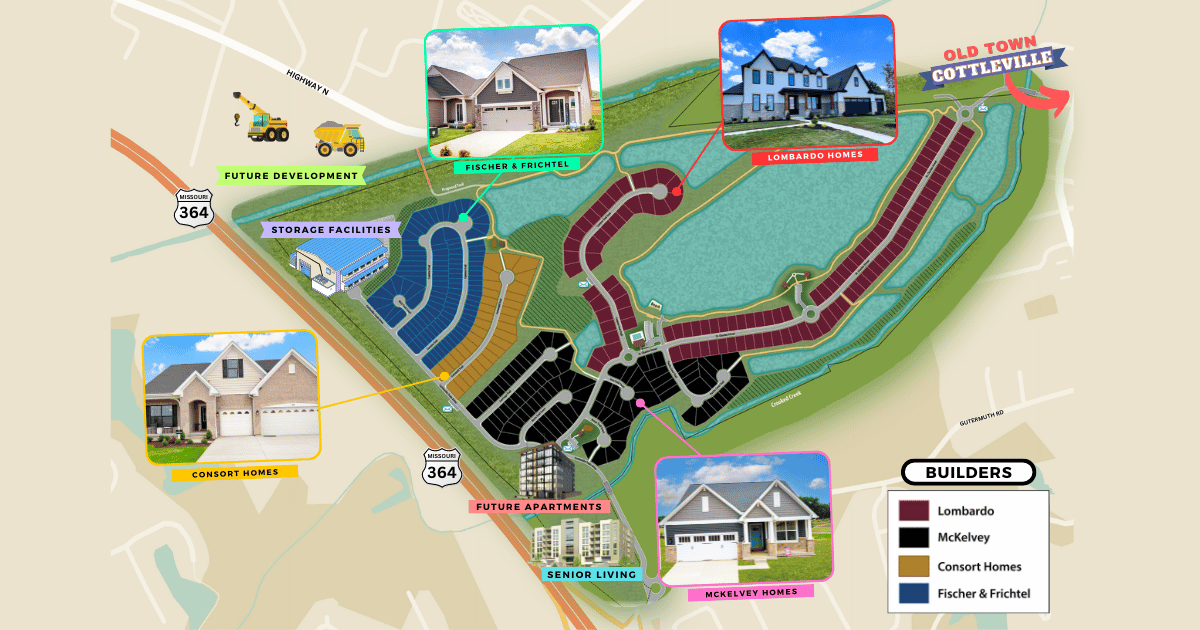
Make sure you’re dealing with a reputable builder:
- Look at reviews to get a better idea of the builder’s reputation.
- Ask your realtor for insight.
- Check the Better Business Bureau for ratings
Once you narrow your options, check the price range to see if the homes fit your budget.
| Tip From The Experts: Don’t assume the base price is the final price. Just because a sign says “from the $400s” doesn’t mean you’ll actually pay $400,000. That number? It’s marketing. The “from” price usually means zero upgrades, standard counters, and basic carpet. If you want what you saw in the model home, expect to add 20–50%.If you go all-in on upgrades, the total cost could even double. |
Now it’s time to start touring communities.
If you’re working with a realtor, let them know in advance so they can pre-register you and prevent any confusion with the builders.
Some builders are very strict about agent registration. Other builders are flexible.
Step 2: Choose Your Lot
Your realtor or the builder’s agent can help guide you when selecting a lot, but it’s best to come up with a list of priorities to ensure you get the lot that’s right for you.
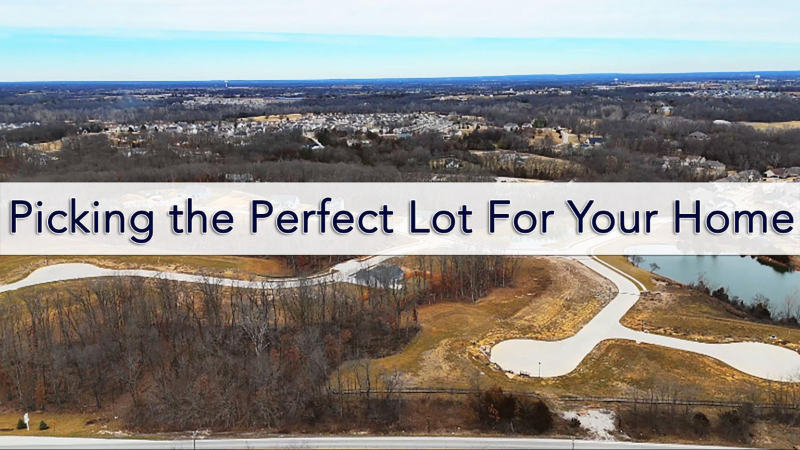
Some things to consider are:
- Orientation: This affects how sunlight moves across your home throughout the day.
- Slope and Topography: The land’s slope can impact construction and drainage.
- Yard Size: Think about how much outdoor space you want.
- Commute Times: Consider proximity to school districts, work, and amenities like grocery stores.
- Privacy: Check the distance to neighbors for better privacy. Look for lots that back to trees, common ground, or ponds (if applicable)
- Proximity to Main Roads: A lot near busy roads may bring noise or traffic concerns.
- Lot Features: Do you want a walk-out lot? Cul-de-sac lot? Corner lot?
Lot prices vary based on location and features.
For example, a premium cul-de-sac lot with a wooded backyard may cost more but add significant resale value.
This is another area where having a realtor working on your behalf can pay off.
We have relationships with builders. We’ve helped our clients secure unreleased lots before they were open to the public.
Step 3: Secure Financing and Put Down Deposit
Financing options for a new construction home are different than buying a resale home.
It’s important to do your due diligence and understand how it works before you dive in.
Buying from a big-name builder? Here’s how it works:
- Upfront Costs: You’ll typically start with a deposit of around 10% of the home’s base price. This ensures you have skin in the game.
- No Construction Loan Needed: The builder handles the cost of building the home—you won’t take out a mortgage until the home is finished.
- Interest Rate Timing: You can’t lock in your mortgage rate until close to the completion date, so rising rates during the build can be a risk.
- Final Down Payment: At closing, your mortgage may only require 3% to 5% down. The good news is that, since you already paid 10%, you’ll get some of that credited at closing.
For custom builds, it works differently:
- Construction Loan: If you’re building on your own land with your own contractor, you’ll need a construction loan to cover the land and building costs upfront.
- Home Loan Conversion: Once the home is finished, the construction loan rolls into a standard 30-year mortgage from a mortgage lender.
- More Complex Financing: This route can be more complicated and costly than buying from a large builder who manages construction for you.
Watch out for builder incentives that require using the builder’s preferred lender or title company.
They may offer perks, but higher rates or fees often offset those shiny “incentives.”
You might be told you must use the builder’s title company, but legally, you have the right to choose your own.
It’s not always easy to push back, but it can save you thousands in the long run.
At the end of the day, it’s your home. Don’t be afraid to look for a better deal and a lower price.
You call the shots here, not the builder.
| Tip From The Experts: There are a lot of details that go into the contract. Bringing a realtor who has experience with newly built homes can help you navigate the fine print and fully understand what you’re signing. Many realtors have relationships with the builders to get the best deal on your behalf. |
Step 4: Select a Floor Plan & Front Elevation
Now comes the fun part: designing the layout of your future home.
Think about how you’ll actually live in the space.
Do you want open-concept living, tucked-away offices, or a giant walk-in pantry for all those Costco runs?
When choosing a floor plan, consider:
- Number of People: How many people will be living in the home? How many bedrooms/bathrooms will you need?
- Space Usage: How do you plan to use the space? Do you need large common areas? Do you prefer private spaces? Is anyone going to work from home?
- Flexibility: Do you need rooms that can serve multiple purposes?
Future Needs: Will the layout accommodate changes, like a growing family?

Front Elevation is how your home looks from every angle from the outside.
That includes windows, roofline, front door, and overall design.
The front elevation does not include landscaping.
Creating a “must-have” list helps clarify your priorities and ensures you get that perfect home.
You can look at structural upgrades later, so if something isn’t perfect, ask!
You can add that must-have item as an upgrade.
Step 5: Select Structural Upgrades
These include changes to the home’s layout, like taller ceilings, a third-car garage, or basement features, and typically add square footage and functionality to the home.
It can also increase the home’s value. Since these can’t easily be altered after the home is built, it’s often worth investing in them upfront.
Structural upgrades you should consider:
- Taller Ceilings
- Additional Garage Bay
- Deeper Basement Pour
- Lower Level Rough-Ins (for bathroom, wetbar, fireplace)
- Dual-Zone HVAC System
| Tip From The Experts: We’ve helped dozens of buyers navigate builder upgrades, and one thing we always say: don’t over-improve for the neighborhood. Those fancy finishes are tempting, but they don’t always return what you paid when it’s time to sell. Let’s talk strategy before you sign off on that design sheet. |
Step 6: Visit the Design Center, Choose Cosmetic Upgrades
Cosmetic upgrades focus on the appearance of your home, such as countertops, flooring, and cabinetry.
You can also choose some building materials here.
Here are some things you’ll look at through the design center.
Exterior Finishes
- Brick, stone, or siding options
- Roofing materials and colors
- Window styles and front door selections
- Shutter and garage door finish
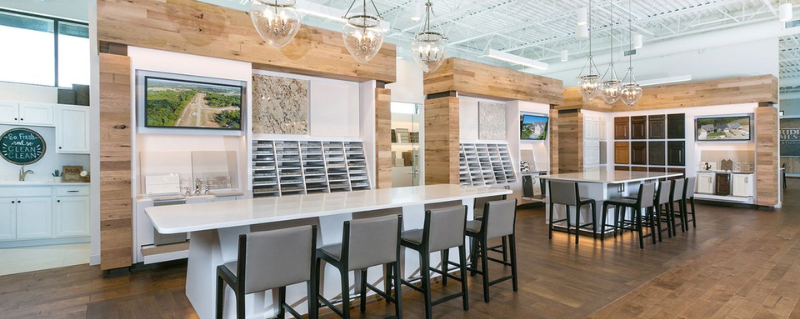
Interior Finishes
- Flooring: hardwood, tile, carpet, LVP (Luxury Vinyl Plank)
- Countertops: granite, quartz, laminate
- Cabinets: color, wood type, hardware
- Light fixtures, fans, and recessed lighting
- Appliances: standard vs. upgraded packages
- Paint Colors
- Bathroom and kitchen tile patterns
- Sink styles and plumbing fixture finishes (chrome, matte black, etc.)
Bring your real estate agent with you to the design center!
This process can be overwhelming, especially if you’ve never had to consider things like countertops, light fixtures, and tile patterns.
Your real estate agent can help you:
- Filter through all the noise
- Stick to your budget
- Avoid over-improving the home for the area
- Focus on designs & upgrades that retain value
| Tip From The Experts: We always tell clients: structure first, sparkle later. Things like taller ceilings, deeper basements, and rough-ins are much harder (and pricier) to add after closing. Cosmetic finishes? Those can wait. |
Remember, you can always change cosmetic finishes later, but you can’t change the structure of your home. Invest in structural upgrades first.
If you’re working with an experienced agent from our team, they can help you narrow down choices.
Step 7: Get Final Price-Out
This is the point where everything comes together.
Once you’ve selected your upgrades, it’s time to review the total cost and adjust if needed to stay within your budget.
Maybe swap out a flooring choice or hold off on a lighting upgrade in favor of taller ceilings.
This is your chance to balance wants and needs while locking your final price in the purchase agreement.
Step 8: Builder Obtains Permits and Approvals
You’re excited about your new home.
You might even drive by the lot to sneak a peek.
Don’t stress if you don’t see any progress right away.
Before the new construction process can begin, the builder has to secure permits and approvals, which can take several weeks.
It’s all part of the process, so don’t worry if you don’t see any construction happening on your lot for a few weeks.
Step 9: Construction Begins
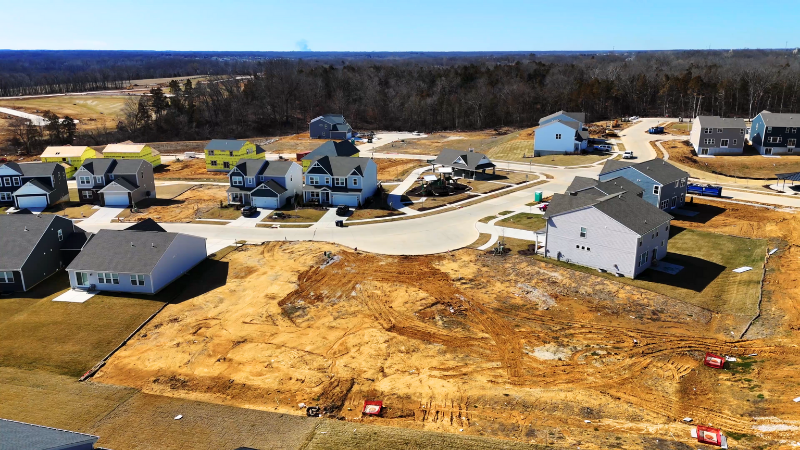
The very first steps include:
- Clearing the lot (if it hasn’t been done already)
- Leveling the site
- Marking where the foundation is going and installing the footings (the support system that makes sure the house doesn’t sink)
Step 10: The Foundation
Once the footings are in place, your home’s foundation—whether a slab, crawlspace, or full basement—is poured and begins curing.
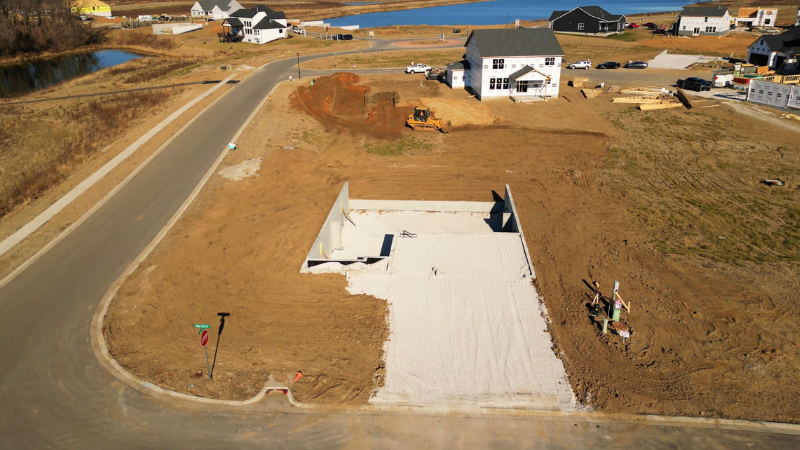
During this time, essential plumbing like drains, sewer lines, and water taps for the first floor are installed.
Inspection: Before moving forward, an inspector will check that everything meets local building codes, including the foundation’s condition, waterproofing, and structural reinforcements.
Step 11: Framing
Once the inspector gives the go-ahead, the framing will go up.
Framing is when it finally starts to feel real, and you start to see your home take shape.

Walls, roof trusses, floor, and ceiling go up, and house wrap goes up to protect the wood.
This process can take one to two months, and the weather can drastically affect the timeline.
Step 12: Plumbing and Electrical
Siding and roofing are installed once the exterior shell is complete.
Pipes and wires are run through interior walls, ceilings, and floors:
- Sewer lines and vents
- Water supply lines for each fixture
Bathtubs and shower units are installed (it’s easier to move heavy objects before the walls are enclosed).
Ductwork for the HVAC system is installed, along with vent pipes that go through the roof. The furnace may also be installed during this stage.
Insulation is added to the floors, walls, and ceilings.
Electrical wiring is added, including:
- Receptacles for outlets, lights, and switches
- Wiring for internet, sound, and music systems.
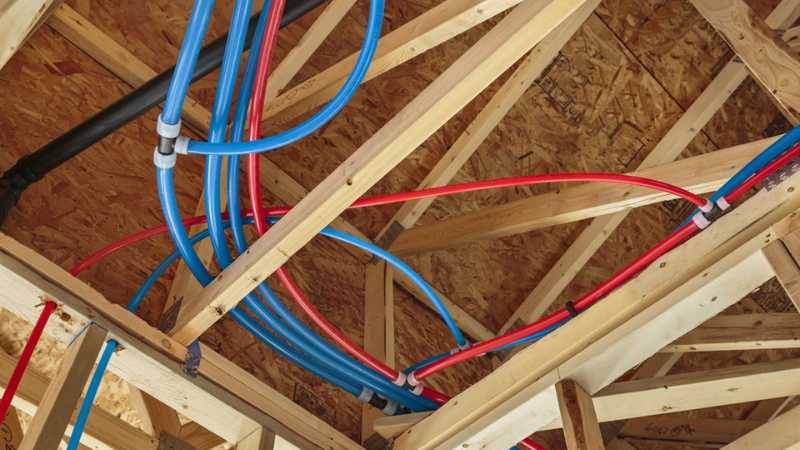
Inspection: The framing, mechanical systems (HVAC, plumbing, etc), and electrical are inspected. This can be up to 3 different inspections, but sometimes the mechanical systems and electrical are done in one inspection.
Step 13: Drywall
Once everything’s wired and piped, the drywall goes up, and your house starts to look like a home.
It’s taped, mudded, and sanded smooth to prepare for paint.

The primer coat of paint is done, and the exterior materials are added.
Step 14: Finishes
At this stage, cabinets, countertops, light fixtures, mirrors, and flooring are installed.
Final coats of paint or wallpaper are applied, and the driveway, walkways, and patios can also be completed.
However, some builders wait to pour some of these things last, so heavy machinery does not damage the concrete.
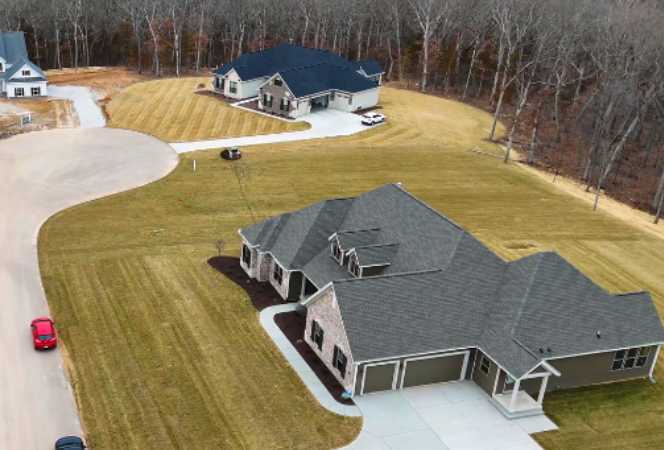
Inspection: A building code official does a final inspection here to get a certificate of occupancy. If any defects are found, another inspection may be scheduled to ensure they were corrected.
Step 15: Final Grade, Sod, and Landscaping
Outside, the builders will shape the yard, lay down sod, and add landscaping.
These are the finishing touches if the weather allows.
If it’s too cold or wet, this part may happen after closing.

Step 16: Final walkthrough
Right before closing, you’ll get a final walk-through of your newly built home with the construction supervisor.
This allows you to look over the whole house and create a punch list. Don’t stress if you notice small issues. It’s normal and part of the process.
The walkthrough allows you to point out anything that needs fixing before you close.
The more custom your home, the more chances there may be for extra walkthroughs to catch details.
Builders want to make things right.
They want you to be happy, leave a good review, and tell all your friends to use your builder!
Step 17: Closing
You made it to the closing date!
Congratulations on your newly constructed home.
Now it’s time to:
- Sign the Paperwork: Sign the mortgage agreement, title transfer documents, and any other required paperwork. Review all documents carefully and bring a valid ID and any requested documents.
- Pay Closing Costs: Prepare to pay closing costs and any remaining down payment. These fees are typically paid via wire transfer or cashier’s check, and the details will be outlined in the Closing Disclosure from your lender.
- Receive Your Keys: Once the paperwork is signed and funds are disbursed, the builder or title company will hand over the keys, officially making you the owner of your new home.
Do I Need To Hire a Home Inspector?
Unlike resale homes, new builds don’t need as many home inspections because the builder has to get permits and pass inspections for things like electrical and plumbing during construction.
Some builders allow additional inspections, but they might not make repairs unless there’s a major issue, depending on the builder.
New homes usually come with a home warranty that covers most potential problems.
- You’ll typically have a 90-day and an 11-month walkthrough where the builder will fix any issues you find.
- Major systems and appliances also have their own warranties.
- Most builders offer to fix any issues in the first year you live in the home.
- There’s often a 10-year warranty for structural problems like foundation issues.
Because the builder already handles inspections and offers a builder’s warranty, many new-construction buyers don’t need a separate building inspection.
However, you’ll still have walkthroughs, like the pre-drywall walkthrough and the final walkthrough, to check the progress and raise any concerns before the home is finished.
Construction Timeline
A lot of factors can affect the building timeframe, and you will want to plan for about a year before being able to move into your brand-new home.
Builders want to finish as soon as they can so they can get paid!
However, many factors can hold up the process.
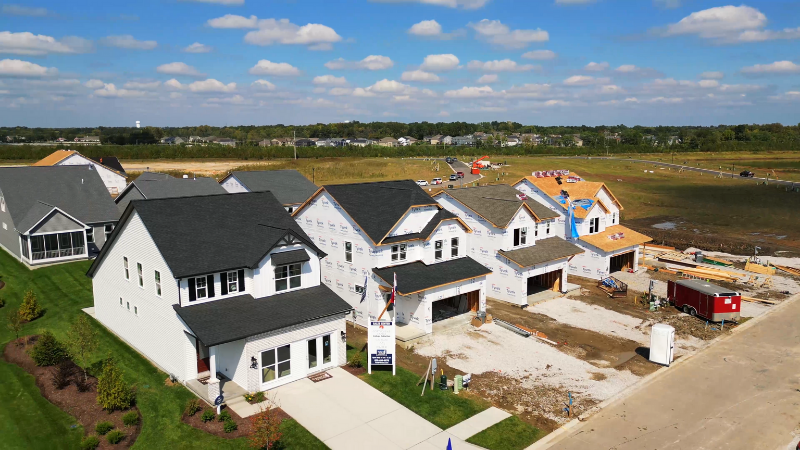
- Weather plays a major role in the homebuilding process. If conditions are unsafe, construction may need to be postponed to ensure the safety of workers and the quality of the work.
- Inspections are an important step and can cause delays if issues arise that need fixing before proceeding.
- The workforce is another contributing factor. Blue-collar jobs in construction are hard to fill, and with the new construction industry booming, there are fewer workers available. As a result, many builders are quoting an 8-12 month timeline for new construction.
- The supply chain can also affect construction timelines. Being able to get the necessary construction materials is crucial to being able to build your home, and if there are delays in the supply chain and material shortages, it will affect the overall timeline.
You want to keep a realistic view of how long it will take to move into your new home, so that you know how long to stay in your current home as it’s being built.
Your builder will give you an estimated timeline, but that can shift throughout the process due to all these factors. Be flexible.
New Build Mistakes To Avoid
We want to set you up for success. Here are some common missteps first-time new-build home buyers make and how to avoid them.
| Mistake | Do This Instead |
| Not using a realtor because the builder has one | It’s a good idea to hire a realtor to act on your behalf. They will help handle any issues and 100% represent your interests. |
| Assuming the base price is the final price | You want to add at least 20-50% to the base price to account for upgrades. Depending on upgrades, this number can even double the price of the home from the base price. |
| Over-Upgrading for the Neighborhood | Paying for premium upgrades in your new home doesn’t always guarantee you’ll recoup that investment when you sell. A realtor can offer guidance on which upgrades will add the most value and help you make smart choices. |
| Ignoring the Fine Print | You want to make sure you fully understand and pay close attention to the builder contract. If you’re not real estate lingo savvy, no worries! Your realtor can assist. |
| Tip From The Experts: We’ve helped buyers avoid all four of these mistakes. The most common one? Skipping a realtor because “the builder has someone onsite.” That rep works for the builder. We work for you. If you’re planning to build, let’s make sure you’re protected every step of the way. |
Ready to Build Your New Home?
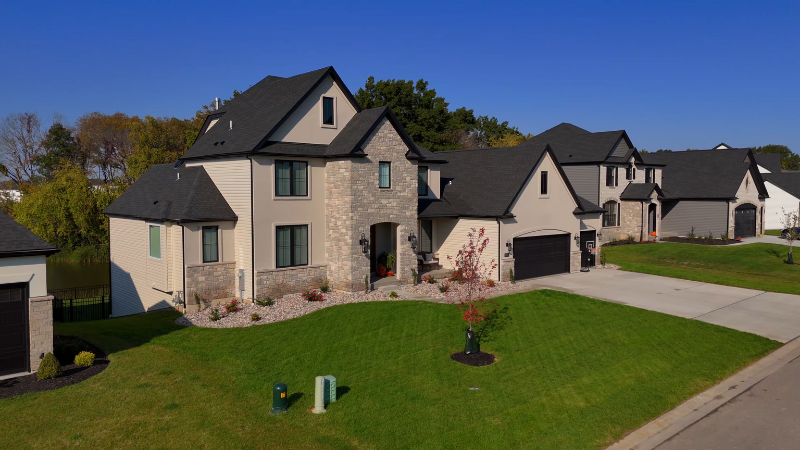
Thinking about building your next home? Let’s make sure you do it the right way.
Our real estate experts are here to guide you through every step of your new home search, from understanding the sales price to navigating the housing market.
Whether it’s house hunting or assessing the pros and cons of new construction, we can help ensure a smooth journey.
Contact us today to begin your journey into buying a new construction home with confidence.






